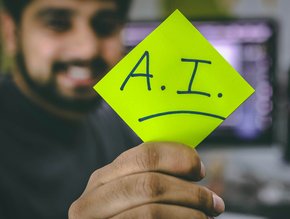Capgemini: Lean-Agile flow can boost procurement functions

Capgemini Invent and Project & Team jointly conducted a study on how organisations can adopt a flow-based approach to improve customer solutions and time-to-value by integrating a Lean-Agile mindset across the entire organisation, including corporate functions.
The report discusses the concept of becoming a flow-based organisation and the importance of integrating Lean-Agile principles and practices into all areas of the organisation, including corporate functions such as HR, legal, procurement, marketing and finance.
Of course, procurement teams can direcelty benefit from incorporating scalable Lean-Agile principles and practices throughout their organisations.
They can collaborate with other functions to ensure a smooth flow of value in the procurement process, from identifying and selecting suppliers to negotiating contracts and managing supplier relationships.
By doing so, procurement can help the organisation achieve optimal resource utilisation, reduce waste, and improve the overall efficiency of the organisation.
According to the report, a new approach to continuously improve and deliver customer solutions and Time-to-Value (TTV) has emerged among forward-thinking organisations.
This approach, referred to as the "flow" approach, requires integrating a Lean-Agile mindset across all areas of the organisation, including corporate functions such as HR, legal, procurement, marketing, and finance.
The traditional approach of confining Lean to manufacturing and limiting Agile to IT software product development is no longer practical or competitive. This approach has created a "business and technology divide" in many cases, which can impede the effectiveness of Lean-Agile for the enterprise as a whole.
To achieve significant business outcomes, organisations need to incorporate scalable Lean-Agile principles and practices throughout the organisation.
By doing so, silos are bridged, cross-team coordination is improved, and shared learning is promoted. Execution consistently aligns with enterprise strategy, providing a feedback loop for investment funding.
The flow of value is measured continuously, leading to optimal resource utilisation for maximum return on investment. Employee motivation is kept high through empowerment and other techniques.
In today's business environment, digital transformation is crucial, and organisations need to respond quickly to accelerating change.
Business Agility improvements are measured by how adaptable an organisation is holistically, including corporate functions.
The report says that all components of the organisation must be able to adjust together on an ongoing basis, and that organisations that include corporate functions in their Business Agility transformation are better positioned to realise business outcomes.
The paper proposes advancing Business Agility by applying continuous rapid learning and feedback loops.
It focuses on three key success factors and shows how to apply them to different Business Agility maturity patterns.
The organisations are primarily divided into two parts: Adaptive Product Development (APD) and Adaptive Corporate Functions (ACF).
The focus of APD is on developing products that directly contribute to the value creation of the enterprise. ACF primarily services internal customers. However, these two parts are not mutually exclusive, and the paper delves deeper into the role corporate functions play in the Business Agility transformation and what Business Agility might look like in ACF.
Corporate function integration maturity curve
The concept of bridging the gap between business and technology in order to implement Lean-Agile across an entire organisation can be challenging.
To address this, we have developed the "Corporate Function Integration Maturity Curve" which outlines three different levels of maturity that organisations go through as they attempt to bridge this divide.
This journey is examined from the perspective of corporate functions within an organisation.
The first level is limited integration, which is currently where most companies reside.
In this state, organisations tend to differentiate between the "run-the-business" (RTB) and "change-the-business" (CTB) parts of the organisation. RTB is usually organised into functional silos, while CTB is managed through project-oriented methods.
However, many executives are starting to realise that treating change as the exception rather than the norm can lead to suboptimal results.
As a result, an increasing number of organisations are shifting towards a more product-oriented approach, focusing on the flow of value and breaking down traditional silos. This is often accomplished through the use of Agile-at-scale frameworks like the Scaled Agile Framework (SAFe).
Despite these efforts, the business and technology divide is still prevalent in many organisations. Corporate functions are often not continuously involved in IT software product development and instead only participate in big-batch requirements-gathering efforts rather than having real business ownership.
The report says that traditional governance mechanisms like steering committees may also be utilised instead of system demos.
At most, business representation may only be limited to selected experts joining a team-of-teams construct on a part-time basis as part of an "Agile Release Train," but not to the degree needed to significantly improve flow and integrate frequent feedback loops.
The limited integration stage is often characterised by a lack of involvement from corporate functions in Lean-Agile practices. However, in order to achieve higher levels of maturity, it is essential for these functions to be integrated into the Agile process on a continuous basis.
Stages of integration
The "Semi-Integration" stage in the Corporate Function Integration Maturity Curve is where organisations are breaking down functional silos and increasing business representation in product development.
This is achieved by having relevant corporate functions present on a semi-permanent or full-time basis, leading to what SAFe calls a "Business-Enabled ART." Some organisations are also applying lean-agile values and principles to improve the flow of value in a setup termed "Agile Business Function."
This stage is heterogeneous, with some companies beginning to institutionalise involvement of certain corporate functions while others have already applied these patterns across most of their corporate functions.
An example of an Adaptive Corporate Function is where cross-functional teams collaborate around the entire employee lifecycle, and domain-oriented chapters are created to ensure alignment.
While many organisations have achieved hybrid corporate function integration, some early adopters are close to full integration.
This involves blurring the lines between Adaptive Product Development and Agile Business Functions, and creating an Agile Business Train to remove organisational boundaries.
Some companies have even merged the team-of-teams constructs to enable an overarching portfolio prioritisation and a Combined Portfolio. However, full integration may not be ideal for every organisation and it's up to each organisation to determine their appropriate level.
Achieving even semi-integration requires a significant appetite for change and identifying where an organisation is on the Corporate Function Integration Maturity Curve.
Advancing on the maturity curve
The Capgemini "Business Agility" point-of-view suggests that creating an Adaptive Operating Model (AOM) using an iterative and incremental approach is key to achieving business agility.
The Minimum Viable Organisation (MVO) approach is recommended to establish rapid learning and feedback loops.
The first step is to define a North Star, which is a vision for reinventing the organisational model. Next, one or more MVO pilots are selected to experiment with Lean-Agile ways of working.
Each pilot goes through three MVO iterations: Experiment, Coordinate, and Integrate, with learnings fed back into a repository for future pilots to build the AOM.
Continuous rapid learning and feedback loops
The report emphasises that in the context of achieving Business Agility, applying continuous rapid learning and feedback loops is essential.
This approach enables organisations to adapt quickly to changes in the market and customer needs.
By constantly learning and integrating feedback, companies can identify areas for improvement and adjust their strategies and processes accordingly.
One of the key benefits of continuous rapid learning and feedback loops is agility. With these processes in place, organisations can become more agile, enabling them to respond quickly to changes in the market and customer needs.
By identifying areas for improvement and making adjustments to their strategies and processes, companies can stay ahead of the competition.
Another benefit, it says, is innovation. Continuous rapid learning and feedback loops allow organisations to test and iterate on new ideas quickly, identifying what works and what doesn't.
This enables companies to bring innovative products and services to market faster, giving them a competitive advantage.
Customer focus is also a key benefit. By integrating customer feedback into their processes, organisations can ensure that they are delivering products and services that meet their customers' needs and expectations.
This helps to build customer loyalty and satisfaction, which can lead to increased revenue and growth.
Continuous improvement is another advantage of continuous rapid learning and feedback loops. By integrating feedback from employees, customers, and other stakeholders, organisations can identify areas for improvement and make changes to their processes and strategies to address these areas. This helps to optimise operations and increase efficiency.
Finally, the report expresses that collaboration is an important benefit of continuous rapid learning and feedback loops.
By integrating feedback from employees across different departments and functions, organisations can identify opportunities for collaboration and cross-functional learning.
This helps to break down silos and promote teamwork, leading to improved performance and outcomes.
Applying continuous rapid learning and feedback loops is key to achieving Business Agility.
This approach enables organisations to become more agile, innovative, customer-focused, continuously improving, and collaborative, all of which can help drive growth and success in a rapidly changing market.
You can read the full report here.
- Exclusive Video: Revolutionising procurement (Dirk Karl MTN)Procurement Strategy
- Procurement's role in a sustainable automotive supply chainProcurement Strategy
- Three key takeaways: Responsible procurement AI use reportTechnology & AI
- Freight procurement technology solutions market to boomTechnology & AI






